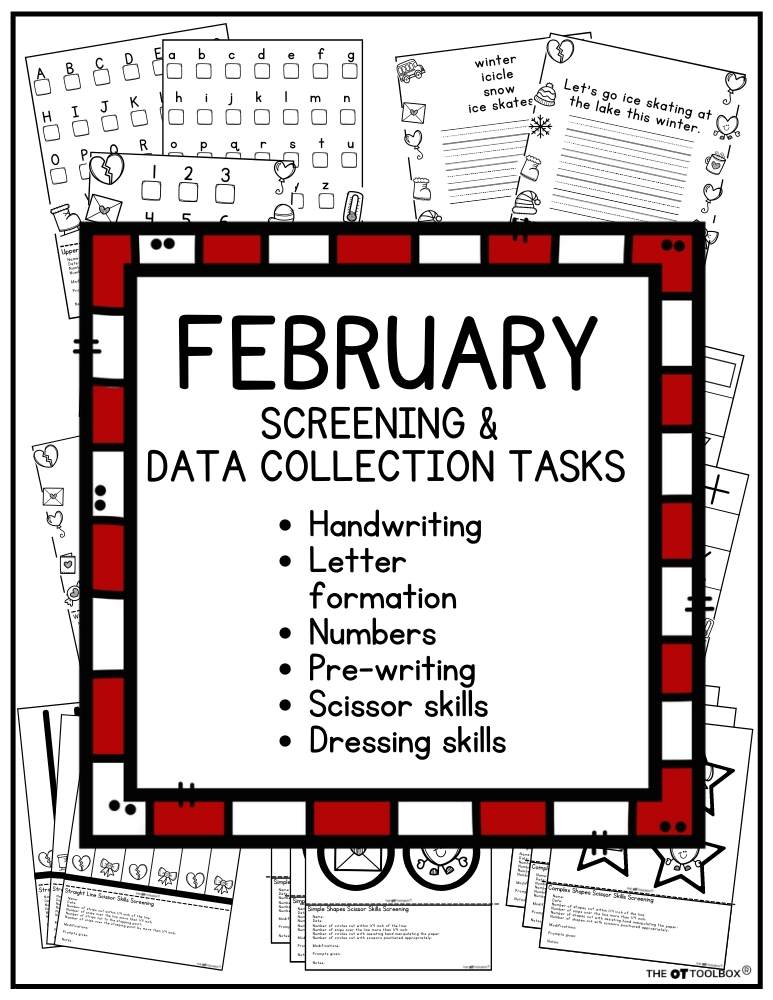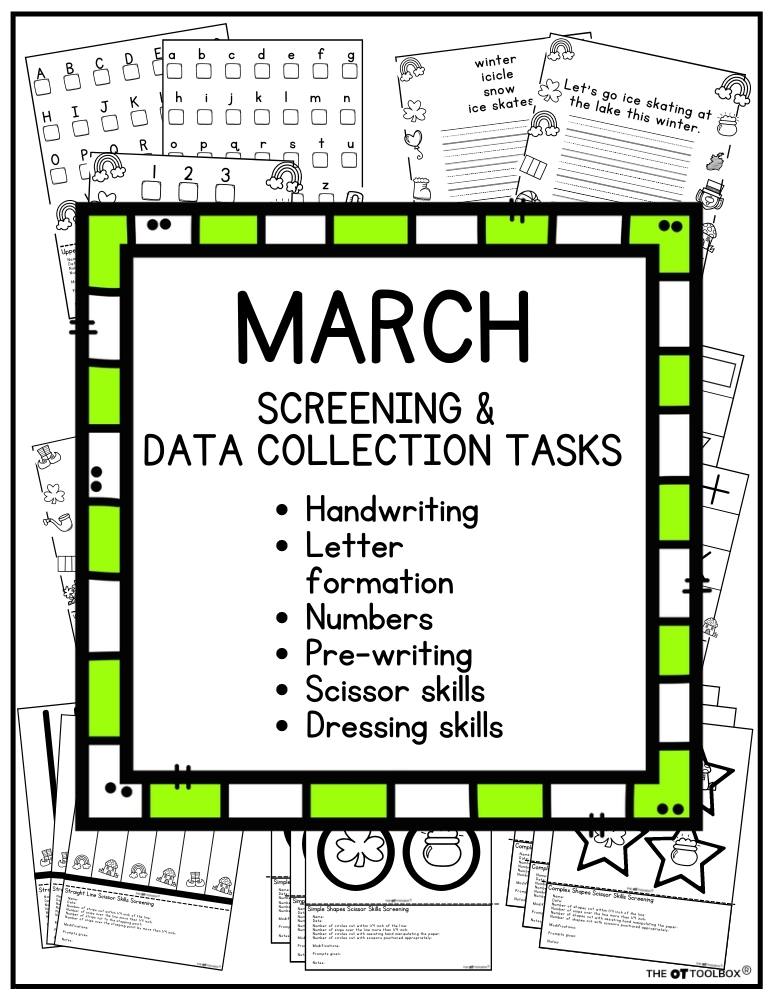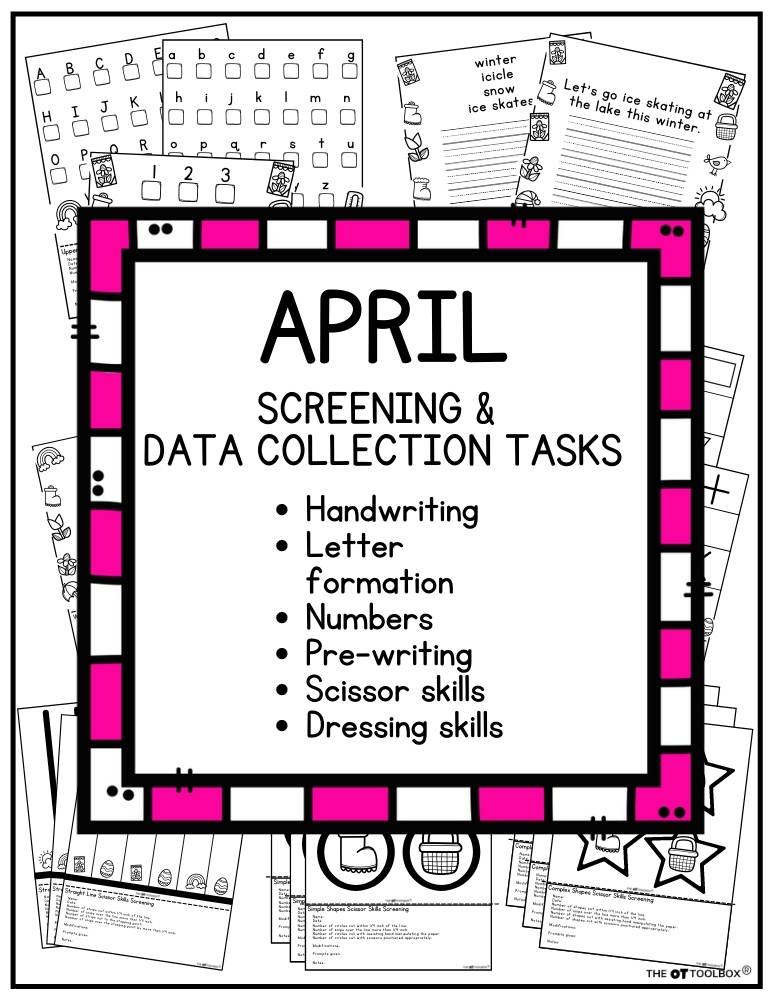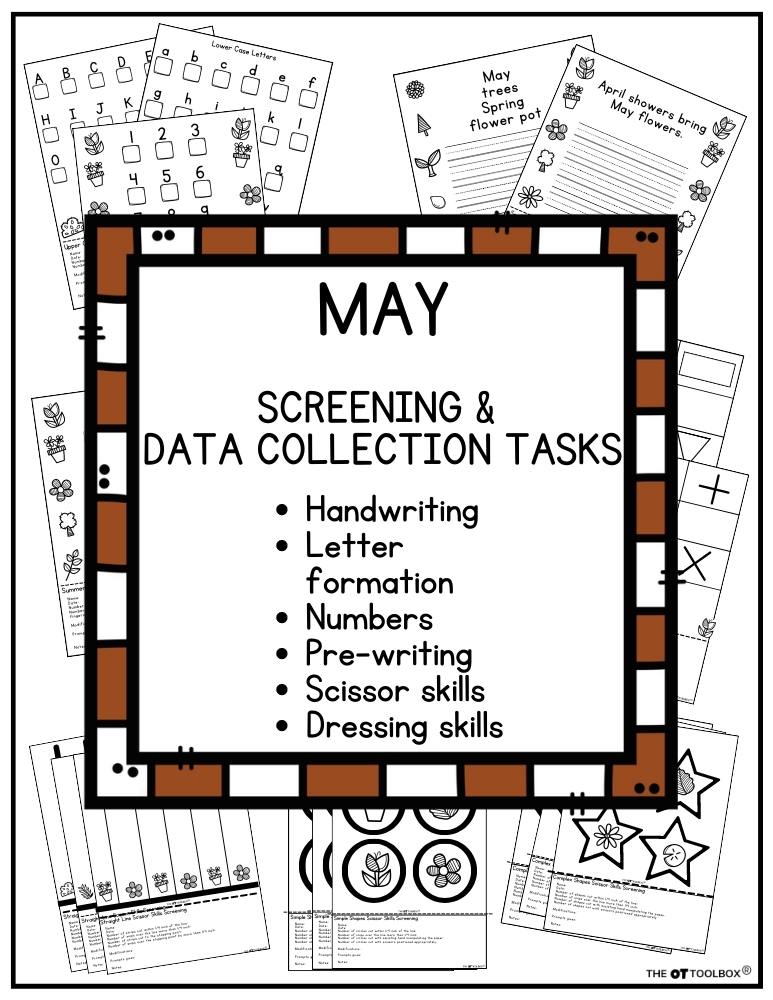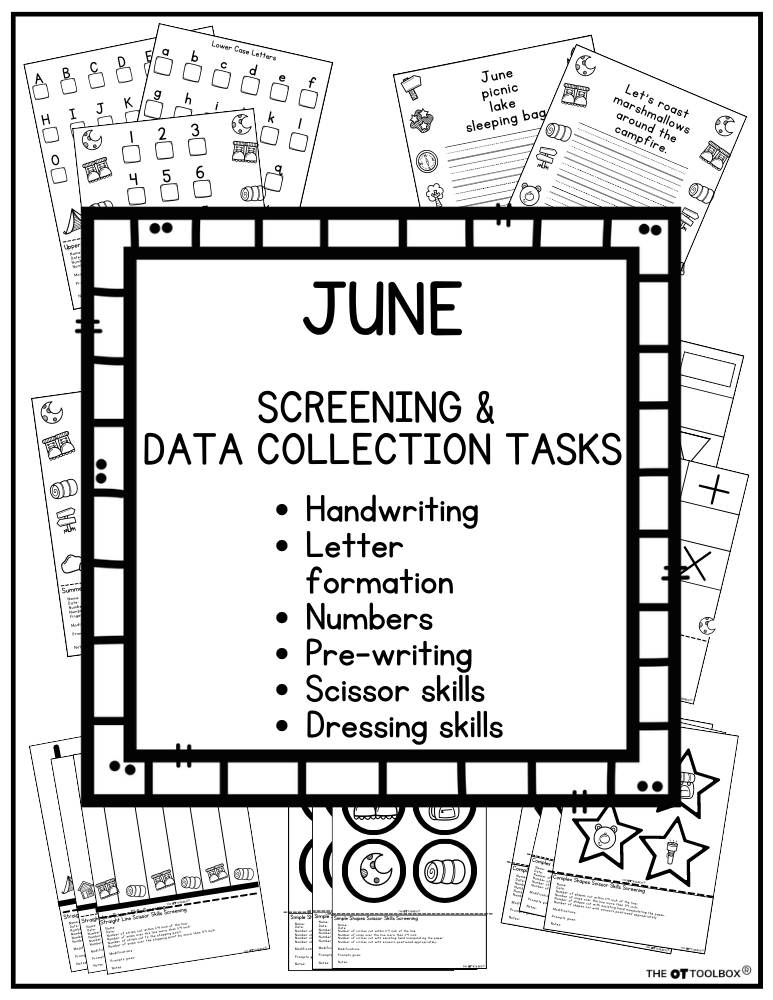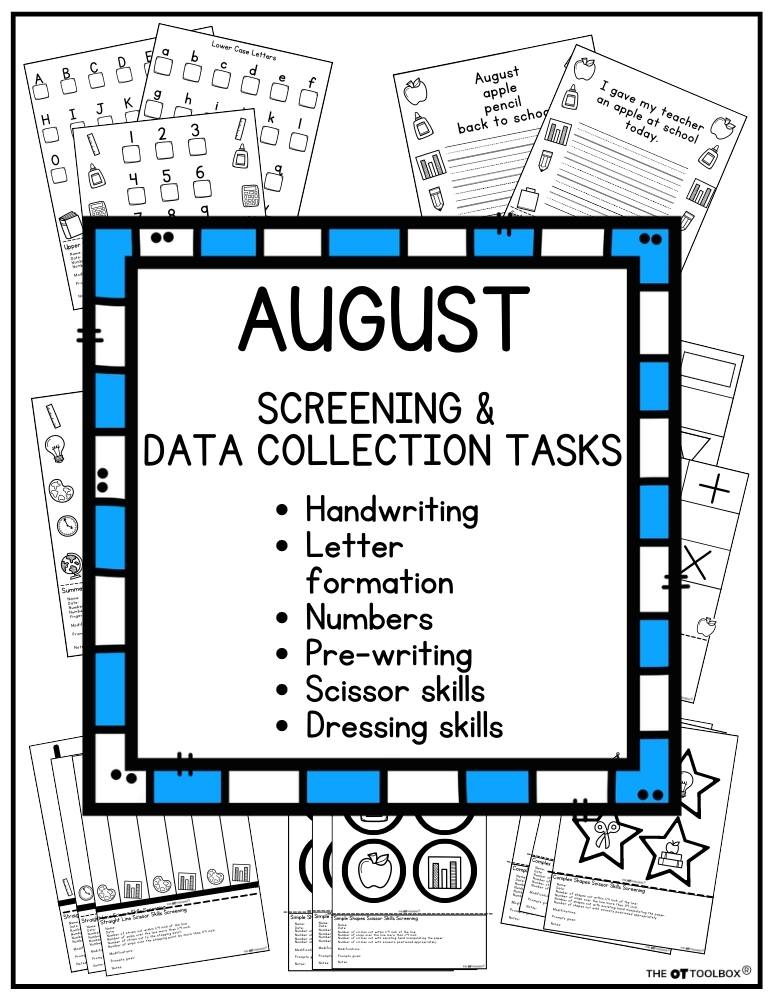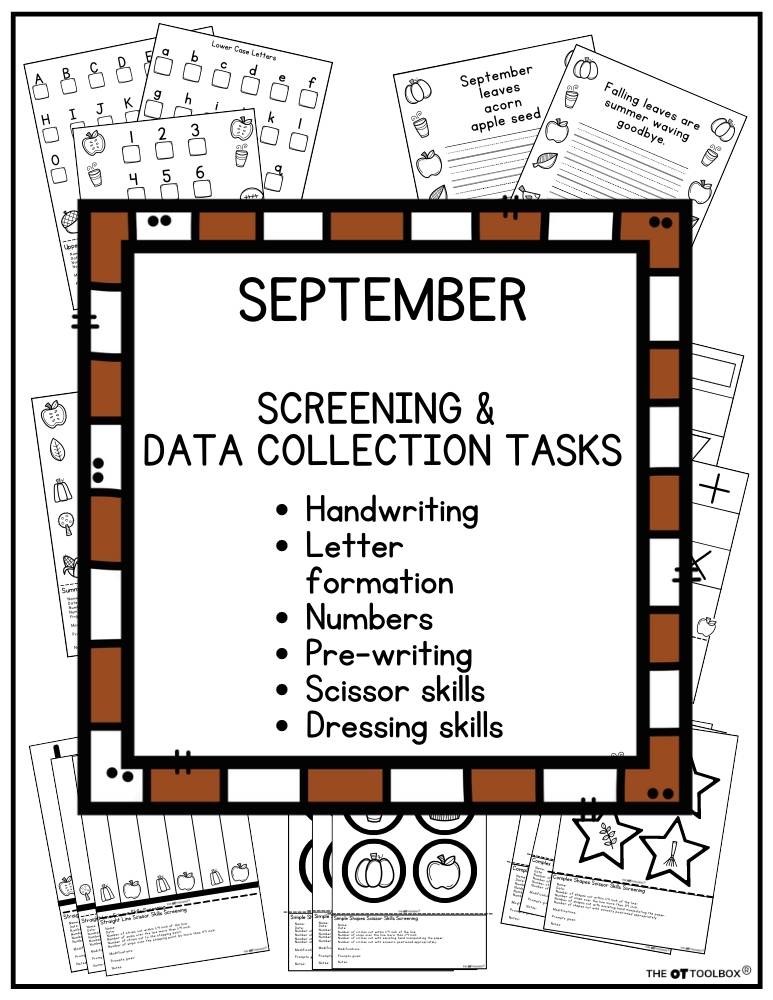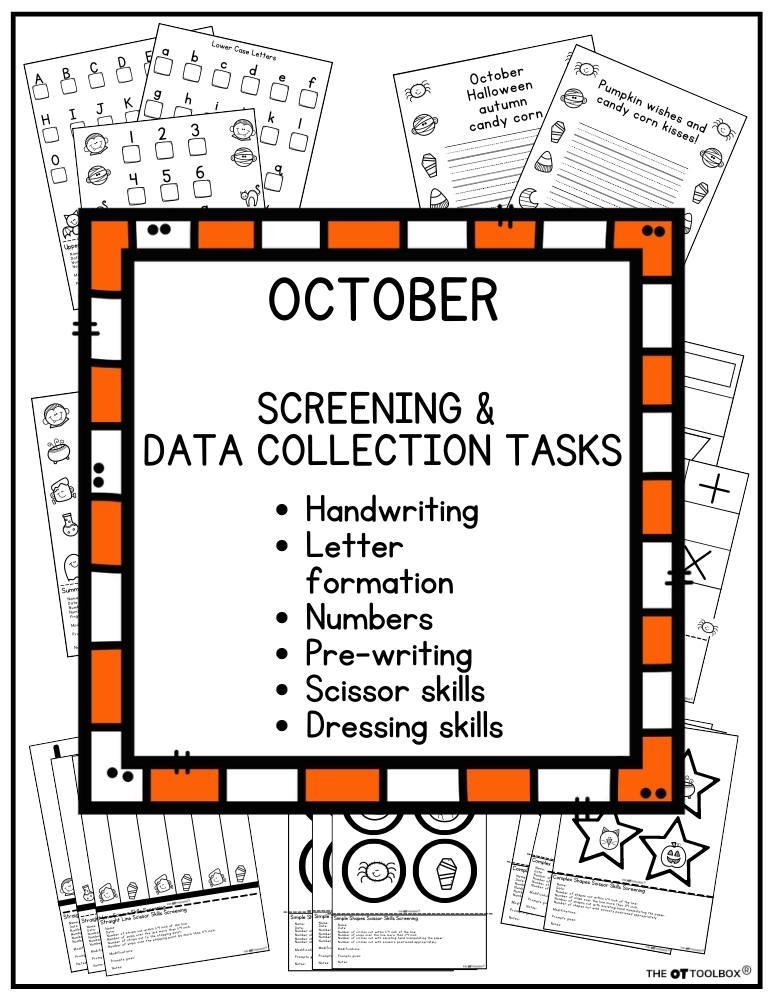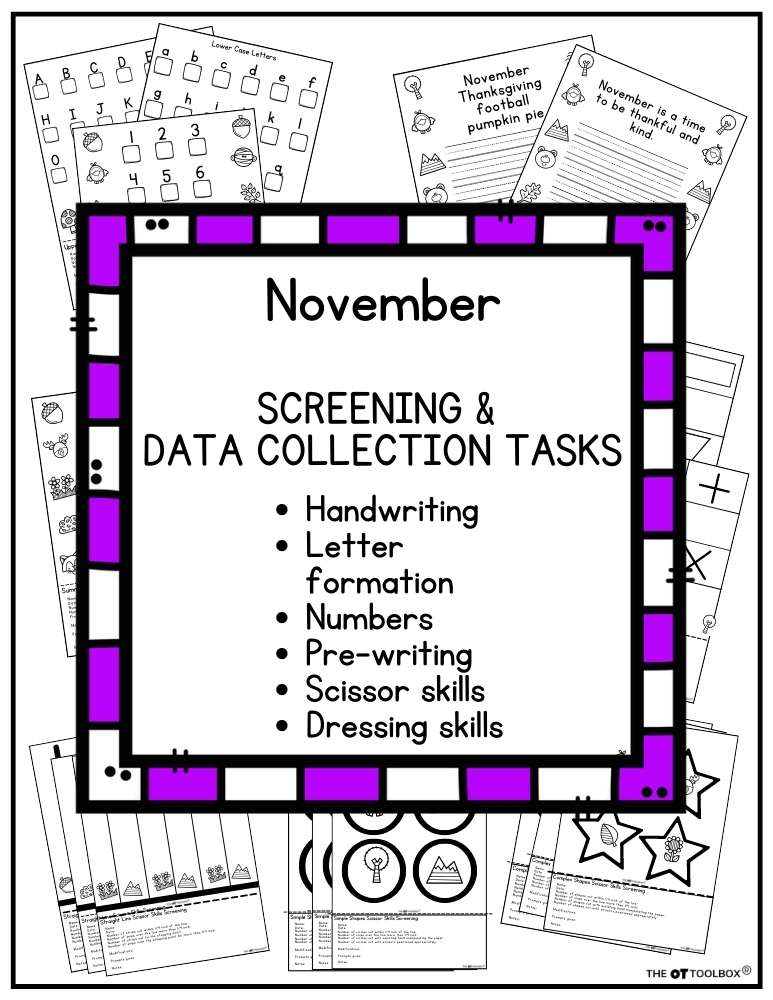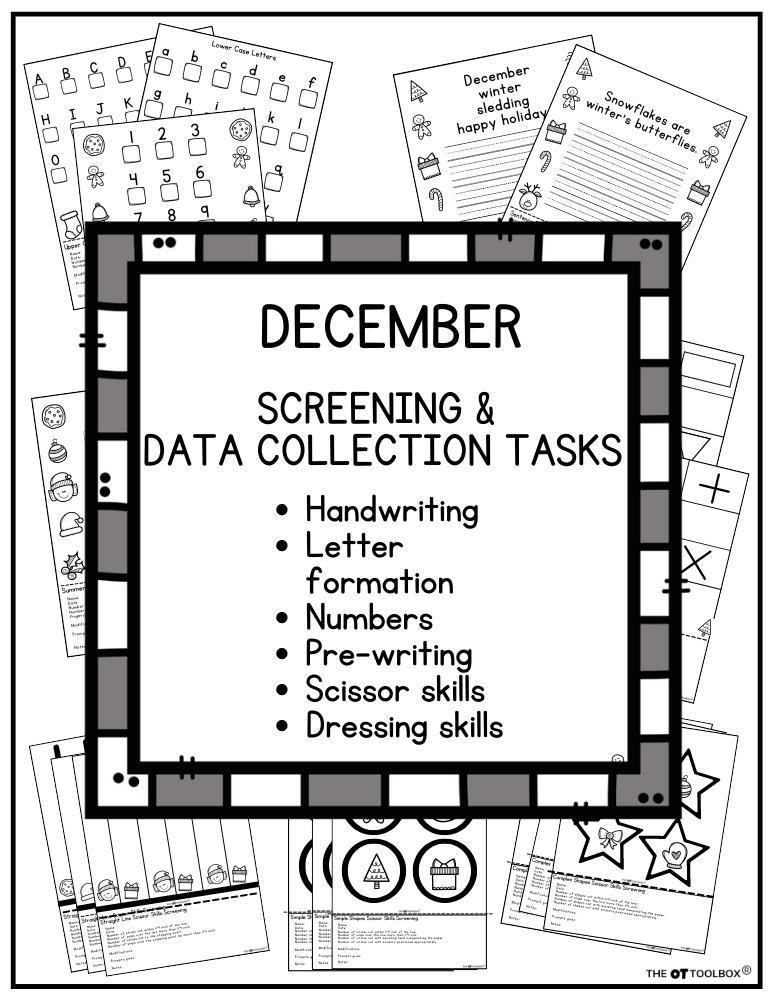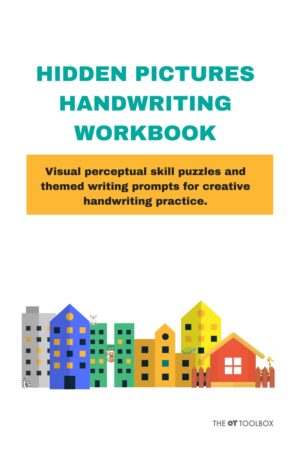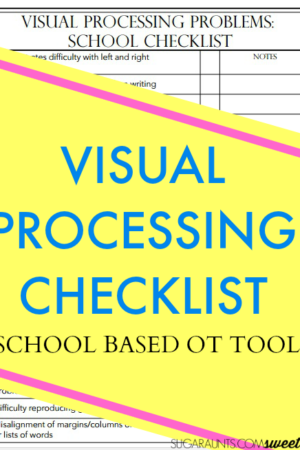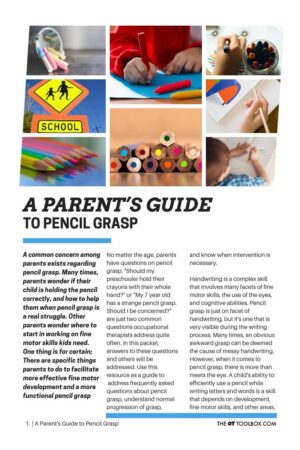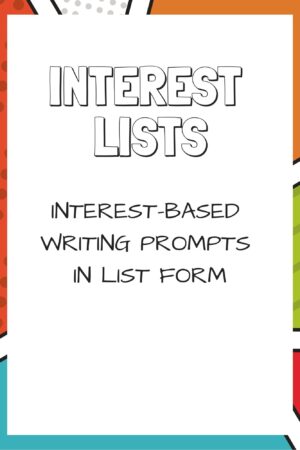Occupational Therapy Screening and Data Collection Kit
$24.00
Occupational Therapy Screening Tools and Data Collection Forms are essential for evidence based practice. How do you measure and track the progress your learners are making? How can you quickly screen for changes after a holiday break or at the start of a school year? Do you need clearer measurement strategies for data collection?
These Screening and Data Sheets are perfect for measuring skills and tracking progress! Better yet, they come in a 12 month pack, with a different theme each month. The data collected each month is consistent, but the theme changes in order to motivate learners, keep them interested, limit memorization, or learn by rote teaching.
These Screening and Data sheets packs contain over 30 reproducible pages each month to work on handwriting, pre-writing strokes, scissor skills, dressing and self help, letter formation (upper and lowercase), and number formation.
Description
This Occupational Therapy Screening and Data Collection kit does the work for you. With 12 different packets, each activity set includes seasonally themed OT screening activities to make data collection fun and engaging.
Documentation and data collection is a chore. Let us make it fun and motivating for kids so they WANT to tackle the very skills that they are working on in occupational therapy sessions: handwriting, letter formation, number formation, coloring, cutting skills, and self-care tasks.
There was a time when teachers/therapists were not gathering data to measure skills and progress. This was definitely easier for educators, however without measurable evidence, it was difficult to assess effectiveness of the programs.
Educators have more than 20 children in each class to track. School based therapists might have 90 children they track per month! It is easy to get them confused and forget which learner is able to cut a circle on the lines, who can write their letters, or how many can zip their own coats. These data sheets make documentation more streamlined and consistent. Using the same type of collection sheets each month can track progress and provide clear documentation of skills.
Many of the sheets include documentation prompts at the bottom to gather data. For example, the lowercase letter copying sheet includes: number of letters written correctly, correct size of letters, modifications needed, and prompts given. There are spaces to chart the learner’s name and the date of the assessment.
The Occupational Therapy Screening and Data Collection Kits include prompts to screen for:
- the percentage of correct letters when copying upper case or lower case letters
- how many letters are formed correctly/directionality/legibility
- size of letters in relation to the boxes
- grasping pattern, hand dominance
- attention to detail, following directions, prompts and reminders needed, level of assistance given
- Can your learner scan the page to identify the correct letters? Are they recognizing what they are writing, or merely copying lines and curves?
- Can they form sentences from a writing prompt? What does their writing look like when not copying from a model?
- Is their independent writing below average because of fine motor delay, cognitive difficulties, or learning delays such as spelling and grammar?
- Can your learner correctly hold and manipulate the scissors/pencil? How much assistance do they need to grip the scissors and cut?
- Can your student continue to hold the scissors while trying to manipulate the paper?
- How many times do you need to repeat the directions so your learner can follow them?
- How many reminders does your learner need while doing this activity?
- Determine what goals and skills you are addressing. Are you looking strictly at letter formation, tracing, and alphabet recall, or something else entirely such as executive function and behavior?
- Focus your observations on the skills you are addressing. It is alright to address one, or all ten skills at once, just be sure to watch for those skills during the activity. It can take practice to watch everything all at once. Newer clinicians often videotape sessions to go back and review clinical observations they may have missed.
- Use data to back up your documentation. Avoid or limit phrases such as min assist, fair, good, some, many, etc. They are vague and do not contain the numbers and data critical to proficient documentation. Instead use percentages, number of trials, number of errors, exact sizing, how many letters were written incorrectly, number of reversals, number of prompts, minutes of attention.
This type of documentation may feel foreign at first if this is not what you are used to, however insurance and governing agencies are becoming more strict on accurate documentation and evidence based practice.
Using these Monthly Screening and Data Collection Sheets will help streamline your documentation, as well as give you the tools needed to accurately report information.
Includes screening tools for each month of the year and data collection recording areas to track targets. Sets included:
- January Data Collection and Screening Kit
- February Data Collection and Screening Kit
- March Data Collection and Screening Kit
- April Data Collection and Screening Kit
- May Data Collection and Screening Kit
- June Data Collection and Screening Kit
- July Data Collection and Screening Kit
- August Data Collection and Screening Kit
- September Data Collection and Screening Kit
- October Data Collection and Screening Kit
- November Data Collection and Screening Kit
- December Data Collection and Screening Kit
Each of the 12 packets target:
- Uppercase letter formation
- Lower case letter formation
- Number formation
- Copying a list of themed words
- Copying a sentence
- Clothing/Self-care screening checklist
- Pre-writing lines and shapes formation
- Cutting straight lines on 3 different thicknesses of stimuli lines
- Cutting curved lines on 3 different thicknesses of stimuli lines
- Cutting simple shapes on 3 different thicknesses of stimuli lines
- Cutting complex shapes on 3 different thicknesses of stimuli lines
Each of the 12 packets contains 33 pages for a total of 396 printable pages.




